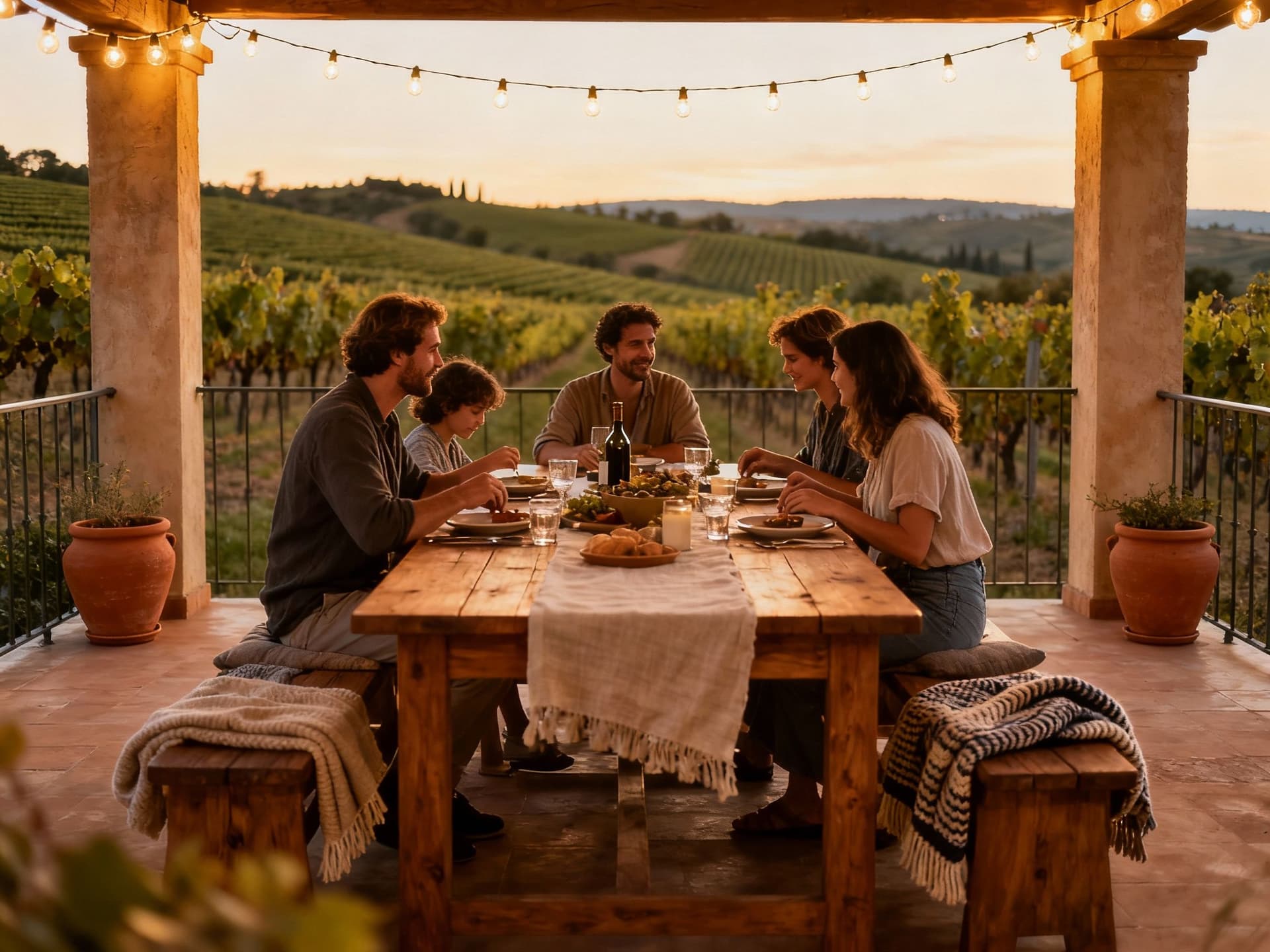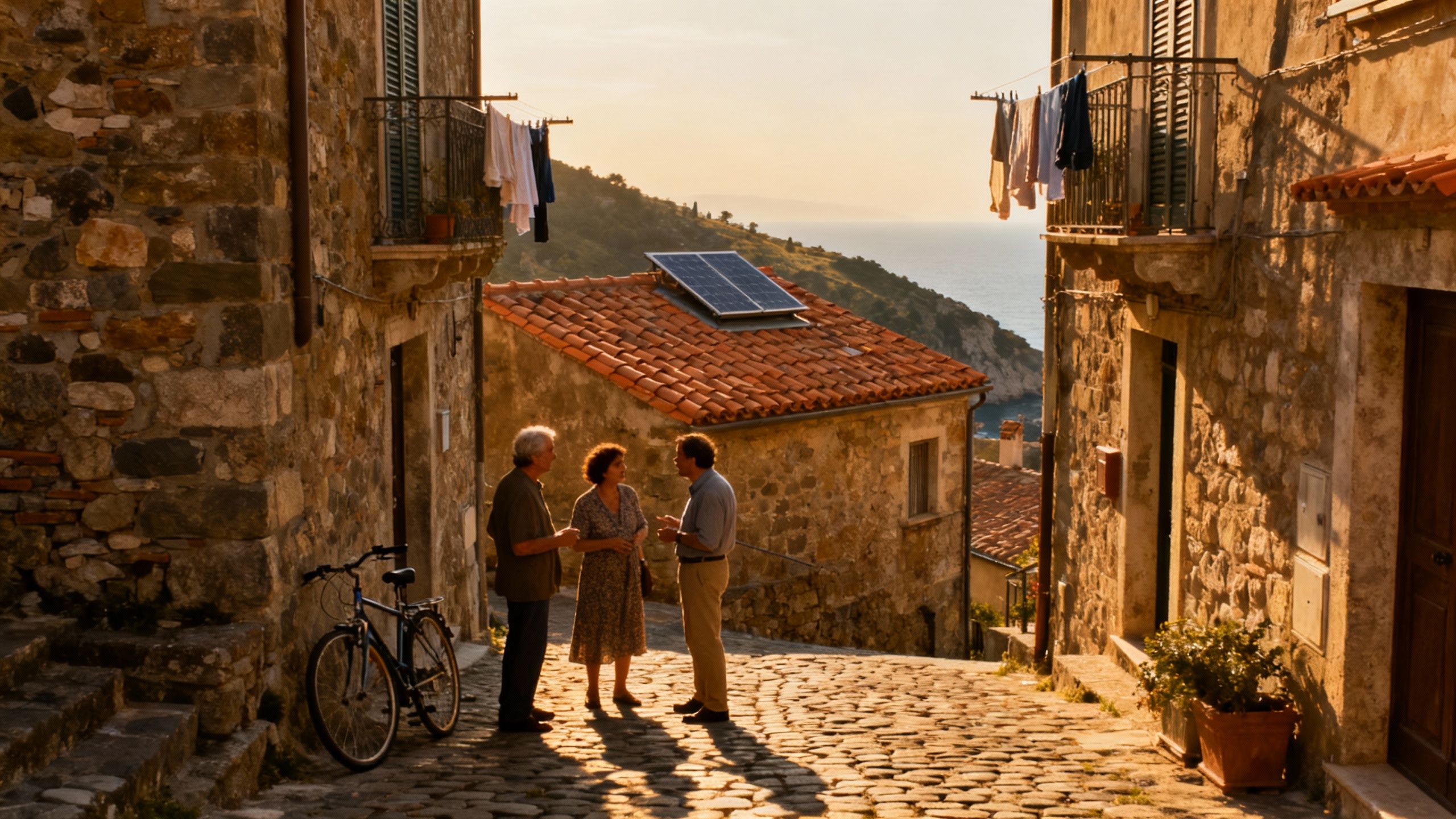Seasonal Living & Stewardship: Where French Homes Thrive
Fall in love with France’s seasonal rhythms and choose homes that match life — visit off‑season, prioritise traditional materials and local craftsmen, and align green upgrades with place.
Imagine stepping out at dawn to buy bread at Marché des Enfants Rouges in Paris, or wandering the stone lanes of Gordes as morning light stitches gold into the limestone. France moves in slow, delicious rhythms — market chatter, café espressos, coastal winds and vineyard pruning — and those rhythms shape how houses are lived in and loved. For international buyers dreaming of an ecological home that sits lightly on the land, the question is: where will those daily rituals flourish, and how will seasonal life change the way you use a property?
Living the French life — senses, seasons and neighbourhoods

France is not a single mood; it’s many. Paris offers early-morning boulangeries and late‑night theatre; Île‑de‑Ré smells of salt and oyster stalls; the Cévennes deliver forest hush and shepherds’ paths. Each region writes a different daily script. When you choose a home, you’re choosing a pace — the sound of church bells in villages, the weekly market in a town square, the morning surf crowd on the Atlantic coast. These habits determine whether a stone farmhouse feels like sanctuary or isolation.
Provence & Luberon: light, craft, and seasonal theatre
Picture lavender fields and covered markets where olive oil and goat cheese are traded like conversation. In villages such as Lourmarin or Roussillon, traditional mas (stone farmhouses), local stonemasons and seasonal fêtes anchor community life. If you want hands-on gardening, a kitchen that cooks from market produce, and neighbours who know the rhythm of harvest and pruning, this region delivers — though summer crowds and short‑term rentals can change neighbourhood dynamics for homeowners.
Brittany & Atlantic Coast: weather, community and surf culture
Here the sea dictates daily life: brisk winters that sharpen the senses, and bright summers that spill into outdoor cafés. Towns from Biarritz to Concarneau keep strong local fishing and artisan traditions — net menders, oyster shuckers, and creperies that become social hubs. Properties often include thick stone walls and small, wind‑sheltered gardens; energy needs differ from Provence, and you’ll value insulation and rain-hardy landscaping.
- Lifestyle highlights to taste, test and treasure
Stroll: Marché des Enfants Rouges (Paris) for breakfast oysters or regional charcuterie
Dine: shared-lunch traditions in village halls during harvest season (Bordeaux, Provence)
Explore: coastal paths in Brittany, oyster platforms in Arcachon, and morning surf culture in Biarritz
Discover: local craftspersons — carpenters in Dordogne, stonemasons in Luberon — who restore with traditional materials
Making the move: practical considerations that match lifestyle

Dreams meet paperwork sooner than you think. After a period of slower transactions, France’s market activity picked up again in early 2025, with notaires and industry press noting a rebound in sales and modest national price rises. That recovery matters because timing, mortgage rates and regional demand will affect both the price you pay and the lifestyle you can secure — for example, whether a renovated stone house with solar and water catchment is within reach or requires staged renovation.
Property styles & how they shape daily life
A townhouse in Lyon places you in cafés and markets within walking distance; a restored château in the Loire promises acreage and seasonal upkeep. Look at fabric as well as form: thick stone walls for thermal inertia, south-facing terraces for passive solar gain, and mature chestnut trees that shade summer courtyards. These details change how you heat, garden, and host friends — and influence renovation scope and local permits.
Working with local experts who care about place
Find agents and builders who understand seasonal living and traditional craft. Local notaires, communal planning offices (mairies) and artisan networks are your allies. Expat groups such as InterNations and regional Anglo associations are helpful for social integration and practical introductions — but when it comes to matching a property to the life you want, an agency that appreciates local ecology and green retrofit options is indispensable.
- Steps to align lifestyle with purchase (practical + poetic)
Visit in two different seasons to feel the house across weather and community rhythms.
Prioritise energy and water measures (insulation, solar orientation, rainwater capture) that lower running costs and deepen the connection to place.
Hire a local architect or craftsperson early — they’ll advise on permitted changes and work that respects traditions like stone repair or lime plaster.
Ask neighbours about rhythms: when markets happen, who maintains shared wells, and how festivals shape summer life.
Insider knowledge: expat truths, seasonal surprises and red flags
Wealth and demand are concentrated in Paris and a handful of coastal and wine regions. That concentration can push prices up and change neighbourhood characters over a decade. For buyers seeking quieter, verdant value, look beyond headline markets — small market towns and inner‑rural villages often retain living traditions and offer better value for green renovations.
Cultural integration: real gestures that matter
A few phrases of French, regular attendance at the weekly market, and respectful curiosity about local fêtes open doors faster than any online forum. Neighbours appreciate hands-on help with harvests or communal repairs — small, practical acts that build trust and invite invitations to local life.
Red flags and practical cautions
Unfinished permits or dubious extensions — check mairie records and ask for diagnostics.
Summer-only neighbourhoods where year-round life is thin — visit out of season to judge community strength.
Properties marketed with sweeping 'eco' claims but without specifics — ask for insulation U-values, PV capacity, or the history of water management.
What long-time expats wish they'd known
Many say: visit outside high season, learn the basics of French bureaucracy, and invest in relationships with local craftsmen. Those friendships often halve renovation time and reveal hidden plot histories or water rights that never appear in listings. Practical knowledge like where to get chestnut wood or which local mason uses lime mortar becomes part of your home's story.
Long-term living: stewardship over speculation
If you want a home that grows into itself — edible borders, native hedgerows, photovoltaic roofs — plan for long timelines and local collaboration. French villages reward stewardship: neighbours notice when gardens are tended, and municipal grants or regional programmes sometimes support energy upgrades for older buildings.
Conclusion: France is a tapestry of rhythms. Choose a place where the daily gestures match what you love — the market stalls, the coastal tides, the harvests — and pair that emotion with local expertise. Visit in different seasons, prioritise sustainable retrofits that suit the local climate, and work with an agency that understands craft, ecology and communal life. In return, you’ll inherit not just a house, but a way of living that feels rooted, green and enduring.
Dutch property strategist who helped 200+ families find sustainable homes in southern Europe; expert in legal pathways and long-term stewardship.


